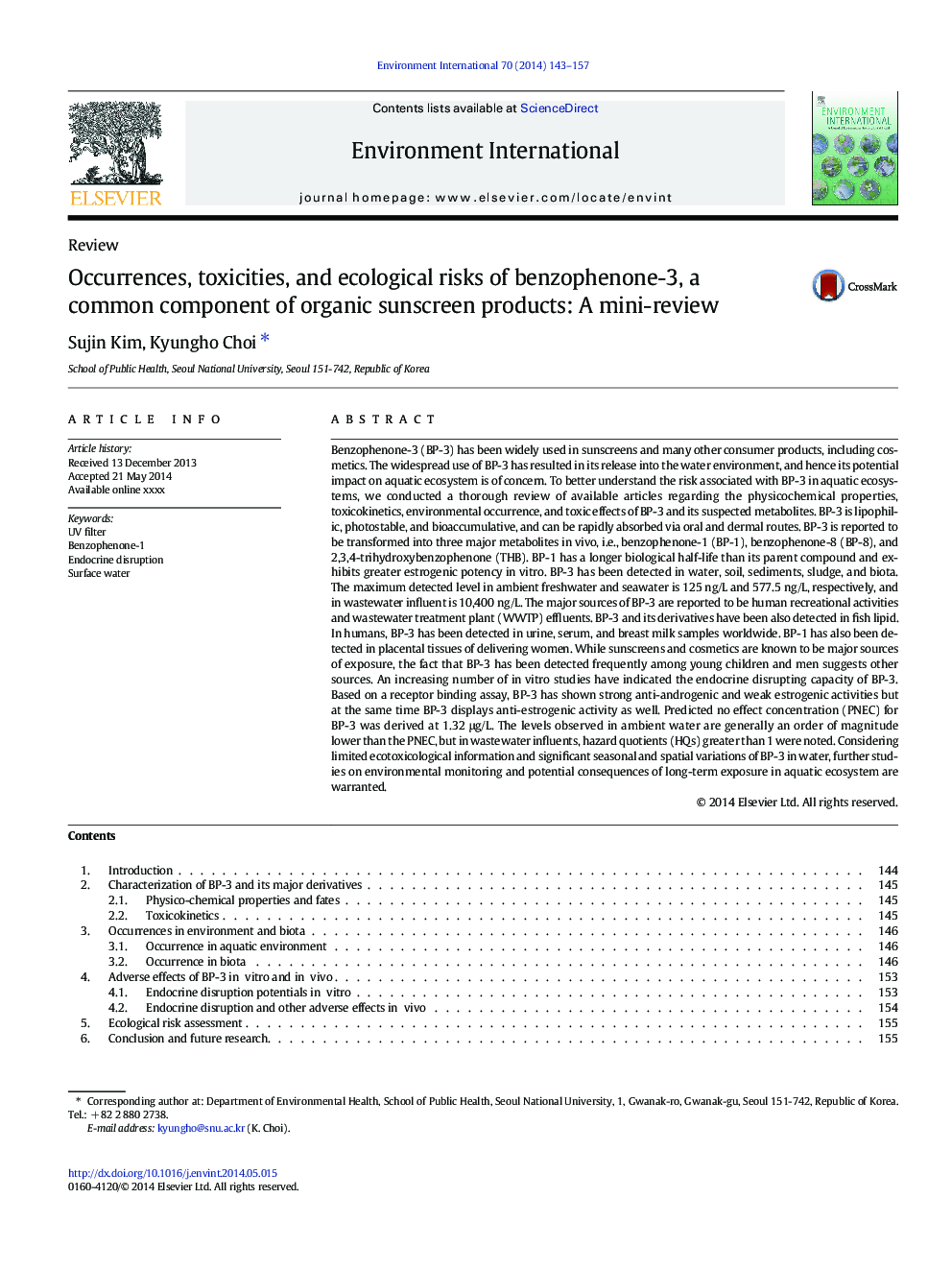| کد مقاله | کد نشریه | سال انتشار | مقاله انگلیسی | نسخه تمام متن |
|---|---|---|---|---|
| 6313722 | 1619058 | 2014 | 15 صفحه PDF | دانلود رایگان |
عنوان انگلیسی مقاله ISI
Occurrences, toxicities, and ecological risks of benzophenone-3, a common component of organic sunscreen products: A mini-review
ترجمه فارسی عنوان
حوادث، سمیت و خطرات زیست محیطی بنزوفنون-3، یک جزء رایج محصولات آرایشی آفتابگیر: یک مینی بررسی
دانلود مقاله + سفارش ترجمه
دانلود مقاله ISI انگلیسی
رایگان برای ایرانیان
کلمات کلیدی
موضوعات مرتبط
علوم زیستی و بیوفناوری
علوم محیط زیست
شیمی زیست محیطی
چکیده انگلیسی
Benzophenone-3 (BP-3) has been widely used in sunscreens and many other consumer products, including cosmetics. The widespread use of BP-3 has resulted in its release into the water environment, and hence its potential impact on aquatic ecosystem is of concern. To better understand the risk associated with BP-3 in aquatic ecosystems, we conducted a thorough review of available articles regarding the physicochemical properties, toxicokinetics, environmental occurrence, and toxic effects of BP-3 and its suspected metabolites. BP-3 is lipophilic, photostable, and bioaccumulative, and can be rapidly absorbed via oral and dermal routes. BP-3 is reported to be transformed into three major metabolites in vivo, i.e., benzophenone-1 (BP-1), benzophenone-8 (BP-8), and 2,3,4-trihydroxybenzophenone (THB). BP-1 has a longer biological half-life than its parent compound and exhibits greater estrogenic potency in vitro. BP-3 has been detected in water, soil, sediments, sludge, and biota. The maximum detected level in ambient freshwater and seawater is 125 ng/L and 577.5 ng/L, respectively, and in wastewater influent is 10,400 ng/L. The major sources of BP-3 are reported to be human recreational activities and wastewater treatment plant (WWTP) effluents. BP-3 and its derivatives have been also detected in fish lipid. In humans, BP-3 has been detected in urine, serum, and breast milk samples worldwide. BP-1 has also been detected in placental tissues of delivering women. While sunscreens and cosmetics are known to be major sources of exposure, the fact that BP-3 has been detected frequently among young children and men suggests other sources. An increasing number of in vitro studies have indicated the endocrine disrupting capacity of BP-3. Based on a receptor binding assay, BP-3 has shown strong anti-androgenic and weak estrogenic activities but at the same time BP-3 displays anti-estrogenic activity as well. Predicted no effect concentration (PNEC) for BP-3 was derived at 1.32 μg/L. The levels observed in ambient water are generally an order of magnitude lower than the PNEC, but in wastewater influents, hazard quotients (HQs) greater than 1 were noted. Considering limited ecotoxicological information and significant seasonal and spatial variations of BP-3 in water, further studies on environmental monitoring and potential consequences of long-term exposure in aquatic ecosystem are warranted.
ناشر
Database: Elsevier - ScienceDirect (ساینس دایرکت)
Journal: Environment International - Volume 70, September 2014, Pages 143-157
Journal: Environment International - Volume 70, September 2014, Pages 143-157
نویسندگان
Sujin Kim, Kyungho Choi,
